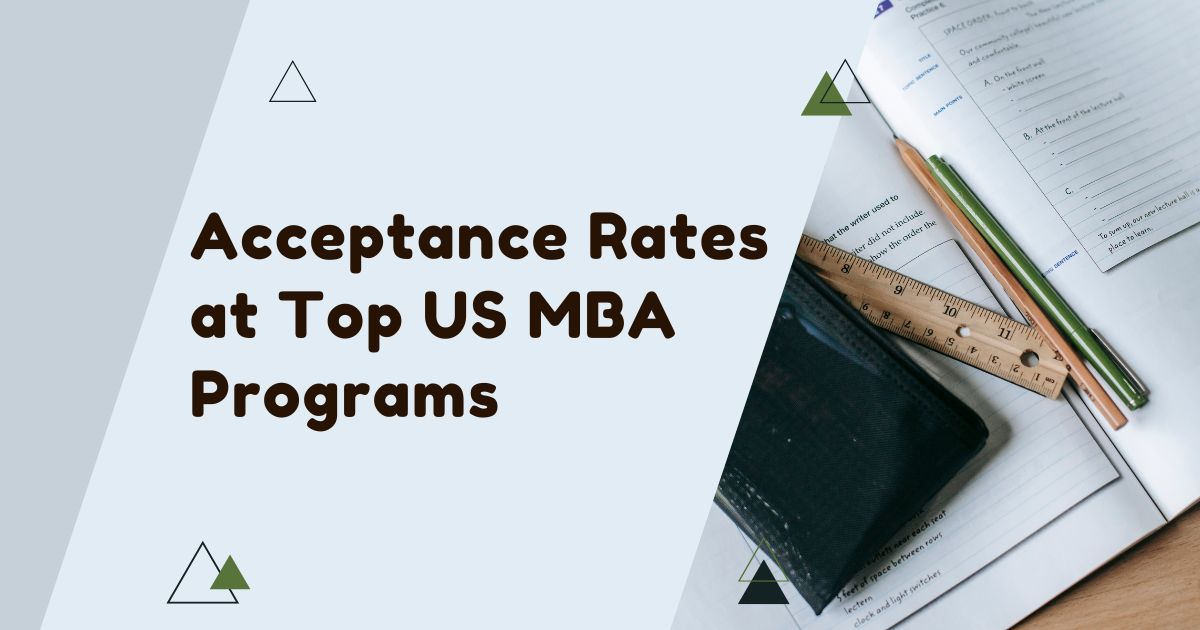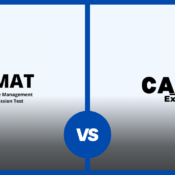
Acceptance Rates at Top US MBA Programs
With the admission season behind us, in this blog we intend to focus on one very critical element of the admission process which is the selectivity factor. Every year top MBA programs receive thousands of applications from some of the most accomplished individuals from all over the world. While admissions committee members would love to have all these talented individuals as part of their incoming class, capacity constraints place enormous limitations and make their job extremely difficult. Thus, they have no alternative but to shortlist individuals from their pool of applications.
While the overall application is the most critical element for an individual in the admission process, there is an also a need to understand the selectivity of the program to get a realistic assessment of one’s profile. Selectivity coupled with other critical elements such as fit factor, professional aspirations, academic aptitude can be useful tools while shortlisting programs. By devoting more time and energy to a select set of programs, one can greatly enhance the chances of a favourable outcome.
Understanding the acceptance rates of the MBA programs you are planning to apply to, is very critical in your overall application journey.
Broadly, it can help you in-
- Setting realistic expectations of admission in program of your interest. Highly competitive programs with low acceptance rates may require applicants to have exceptionally strong profiles, while programs with higher acceptance rates may offer more opportunities for a wider range of applicants.
- Efficient targeting B-schools- By understanding the acceptance rates, applicants can target schools that align with their qualifications, goals, and preferences. They can focus their efforts on applying to programs where they have a competitive chance of admission based on their academic and professional background. This becomes a key factor in designing your application strategy, optimal channelling of efforts.
- Understanding acceptance rates can help applicants make informed decisions about how many schools to apply to and how much to invest in the application process.
- Knowing the acceptance rates can allow applicants to benchmark themselves against their peers. Applicants can compare their qualifications and profiles to the average admitted student profiles at different schools to assess their competitiveness as applicants.
Recommended Read: Understanding Global MBA Program Rankings and Target GMAT Scores
Overall, understanding acceptance rates into MBA programs can provide valuable insights and guidance for prospective applicants as they navigate the application process and make informed decisions about their MBA journey.
Following table brings you the information on the ranking, average GMAT score, acceptance rate of top 25 B-schools.
| Name | US News Ranking 2023-2024 | Average GMAT Score | Average Undergrad GPA | Acceptance Rate |
| University of Chicago (Booth) | 1 | 729 | 3.56 | 30.00% |
| Northwestern University (Kellogg) | 2 | 729 | 3.7 | 31.40% |
| University of Pennsylvania (Wharton) | 3 | 733 | 3.6 | 22.80% |
| Massachusetts Institute of Technology (Sloan) | 4 | 724 | 3.59 | 14.80% |
| Harvard University | 5 | 730 | 3.7 | 14.40% |
| Stanford University | 6 | 737 | 3.76 | 8.60% |
| Dartmouth College (Tuck) | 6 | 726 | 3.53 | 33.40% |
| Yale University | 8 | 723 | 3.64 | 27.60% |
| University of Michigan–Ann Arbor (Ross) | 8 | 720 | 3.47 | 28.10% |
| New York University (Stern) | 10 | 733 | 3.62 | 27.10% |
| University of California–Berkeley (Haas) | 11 | 729 | 3.64 | 19.60% |
| Columbia University | 11 | 732 | 3.6 | 19.70% |
| Duke University (Fuqua) | 11 | 718 | 3.46 | 20.50% |
| University of Virginia (Darden) | 14 | 720 | 3.51 | 34.20% |
| University of Southern California (Marshall) | 15 | 732 | 3.58 | 24.80% |
| Cornell University (Johnson) | 15 | 707 | 3.3 | 31.20% |
| Emory University (Goizueta) | 17 | 700 | 3.38 | 37.10% |
| Carnegie Mellon University (Tepper) | 18 | 702 | 3.33 | 28.80% |
| University of California–Los Angeles (Anderson) | 19 | 708 | 3.41 | 37.60% |
| University of Washington (Foster) | 20 | 703 | 3.3 | 28.10% |
| University of Texas–Austin (McCombs) | 20 | 706 | 3.5 | 34.10% |
| Indiana University (Kelley) | 22 | 685 | 3.38 | 23.50% |
| University of North Carolina–Chapel Hill (Kenan-Flagler) | 22 | 706 | 3.4 | 35.90% |
| Rice University (Jones) | 24 | 702 | 3.43 | 42.80% |
| Georgetown University (McDonough) | 24 | 697 | 3.29 | 50.90% |
| Georgia Institute of Technology (Scheller) | 26 | 690 | 3.24 | 32.30% |
Source: https://www.accepted.com/mba/selectivity-index
Observing previous years trends in the acceptance rates of different B-schools, it becomes apparent that last year witnessed relatively higher acceptance rates, as illustrated in the graph provided below.
However, it’s important to note that acceptance rates for business schools (B-schools) can fluctuate significantly based on a variety of factors including the institution’s network, the competitiveness of the program, and the characteristics of the applicant pool.
These acceptance rates depend on plethora of factors like-
- Changes in the admission strategies of universities, these changes include adjustments to eligibility criteria, application requirements or evaluation process, making the program accessible to wider pool of applicants.
- Universities might be looking for class expansion, which in turn could be driven by factors like growing demand for program, increased resources, etc.
- If MBA programs are witnessing decline in applications from their traditional demographic, they may change their policies to make program more diverse and, in the process, increasing the acceptance rates
- As the landscape of MBA education becomes more competitive, top universities may adjust their admission strategies to remain competitive. This could include offering financial aids, reducing application barriers, or enhancing the overall student experience to attract top candidates, ultimately leading to higher acceptance rates.
- Changes in market trends or employment opportunities may influence the decision of prospective MBA applicants to pursue graduate education. If fewer candidates are choosing to pursue MBA programs, top universities may adjust their admission policies to maintain enrolment levels, resulting in higher acceptance rates.
Overall, the increasing acceptance rates at MBA programs of top universities are likely influenced by a combination of internal and external factors, including changes in admission strategies, shifts in applicant preferences, and broader trends in the higher education landscape.
Recommended Read: Guide to January 2025 MBA Programs



